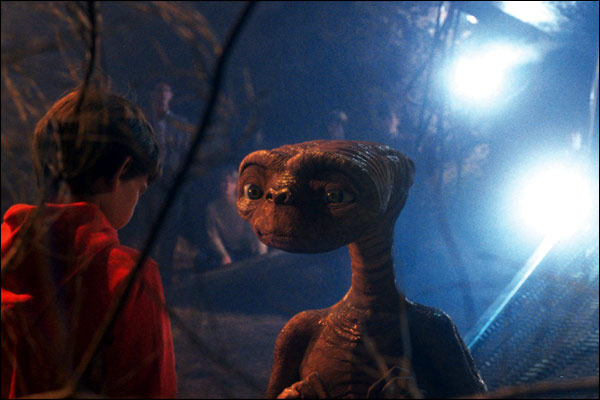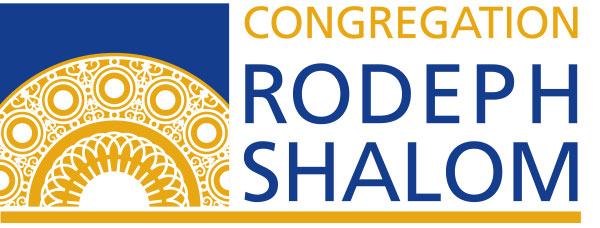 Last month, I had the opportunity to watch the movie E.T. as the Philadelphia Orchestra performed the John Williams score live with the screening of the film at the Kimmel Center. It had been years since I had seen Steven Spielberg’s imaginative masterpiece about a lost alien who is befriended a 10 year old boy.
Last month, I had the opportunity to watch the movie E.T. as the Philadelphia Orchestra performed the John Williams score live with the screening of the film at the Kimmel Center. It had been years since I had seen Steven Spielberg’s imaginative masterpiece about a lost alien who is befriended a 10 year old boy.
When I saw the movie as a child, I understood the message to be one of friendship. Although friendship was still present, this time, I saw something different. All of these years later, it was clear to me: the movie about the extra-terrestrial is an allegory. When faced with difference, children are driven by curiosity and love. Whereas many of the adults in the story see difference, and respond with fear, self-protection and even attack.
What is our inclination when we encounter something outside of ourselves? Do we open our eyes to see? Or do we remain covered, protected, in the dark?
In this week’s Torah portion, Noach, God witnesses earth’s corruption, and endeavors to destroy the world with a flood and repopulate the earth, by saving two of every species. God instructs Noah to build an ark for his family.
The specifics of the ark design include a tsohar, to be constructed on the top of the ark: “Make a tsohar and terminate it within a cubit of the top.” Got that? The translation of tsohar is unclear and the meaning changes according to how you execute the blueprint. Analyze the instructions, and the blueprints will either show an opening that is one cubit (about a foot) tall or a slanted covering that should project one cubit beyond the side of the ark. For those of us who are not in architecture or construction, simply put, a tsohar can either cover the light, or open to the light. The tsohar is either a roof, or a window.
Despite the language uncertainty, most translations agree: tsohar is a window. Our own translation clearly reads: “Make an opening for daylight in the ark, and terminate it within a cubit of the top.” As tempted as they may be to cover up and protect, Noah and his family need a window to let the light in. As alien or uncertain as the world around him may be, Noah is not meant to close his eyes, detach. No– Noah is meant to open his eyes, to see the world through the tsohar–through the opening for daylight.
I think it’s a beautiful image that might shape our relationship to the world today. The one halakhah–the one traditional Jewish law about the design of a sanctuary, mirrors the ark: a sanctuary ought to have windows. In Jewish life, we seek not to live in a bubble, but to be in the world. To get outside ourselves in our spiritual and ethical living. Through the opening to daylight, we welcome the opportunity to see what’s out there, and to understand difference.
Last week, Daniel Radosh, a writer at the television program The Daily Show received a permission slip for his son to read the book, Fahrenheit 451. The book remains controversial enough to merit a permission slip, in order to read it. Ironic since the controversy is born out of a dystopian tale of political commentary, about, censorship. There was no way Daniel Radosh could simply sign the permission slip. Instead, he wrote to the teacher: “I love this letter! What a wonderful way to introduce students to the theme of Fahrenheit 451— that books are so dangerous that the institutions of society — schools and parents — might be willing to team up against children to prevent them from reading one. It’s easy enough to read the book and say, ‘This is crazy. It could never really happen,’ but pretending to present students at the start, with what seems like a totally reasonable ‘first step’ is a really immersive way to teach them how insidious censorship can be.”
It seems to me what Radosh is advocating for is daylight. A tsohar–an opportunity to see and to understand different ideas, different experiences and different people.
This Wednesday, the Jewish world and those who love us, will observe Krystallnacht, the Night of the Broken Glass. On Nov. 9-10, 1938, the Nazis vandalized Jewish businesses, homes and schools, torched synagogues, and killed close to 100 Jews, initiating the Holocaust. For Jews, the pogrom of Krystallnacht marks the time when, more tragically than any other in modern history, the Jewish people as well as people with disabilities, gays, gypsies, communists, Catholics, and everyone else deemed to have a different ethnicity, homeland, body, religion, or idea, were dehumanized, feared, and attacked.
With his poem, “Then They Came for the Jews,” the German Lutheran pastor, Martin Niemoller, captured the complicity of so many, during the time of the Nazis’ rise to power. From 1937-1945 Pastor Neimoller was interned in the concentration camps. Before his imprisonment, Niemoller conformed to some anti-Semitic norms, and only opposed Hitler once the Nazi platform opposed his church. Yet, upon Niemoller’s release, he said that his imprisonment was a turning point and changed his view. He expressed deep regret that he did not do enough to help the victims of the Nazis. Out of the regret was born Pastor Niemoller’s famous poem about persecution, guilt and responsibility:
First they came for the Socialists, and I did not speak out—
Because I was not a Socialist.
Then they came for the Trade Unionists, and I did not speak out—
Because I was not a Trade Unionist.
Then they came for the Jews, and I did not speak out—
Because I was not a Jew.
Then they came for me—
and there was no one left to speak for me.
Although the poem is well-known, fewer people realize that there are many versions and adaptations. The earliest of them, written in 1946, list the Communists, incurable patients, Jews, and Jehovah’s Witnesses. In all versions, he begins with the group that for him, is hardest to see—the group that seems to him, farthest, most alien, least connected in his own life. The impact is carefully built up, by going from the smallest, most distant affected group, to the largest victimized group, the Jews…. and then finally to himself. The Pastor does not only come to see the world that was once alien to him. Pastor Neimoller comes to bring the distant world, closer to him.
In the Torah, Noah is meant to open his eyes, to see the world through the tsohar–to see even that which is distant from him, through the opening for daylight.
It’s not surprising that traditions who study our Hebrew Bible have embraced the meaning of window, rather than roof. But that translation choice is not only driven by inspiration and a compelling pull towards light imagery. Bible translators don’t actually translate according to inspiration. When scholars encounter an unclear word, they seek out other instances in the Bible that can provide a clue.
In parashat Noach, a couple of chapters later, at the end of 40 days, using the Hebrew chalon, a more certain word for window, Noah opens the window of the ark. It was a window all along. He opens the window to send out the raven and then the dove, who eventually returns with a plucked-off olive leaf in his bill. Noah does not only see the world through the window; Noah brings the distant world, its hope and its promise, closer to him.
At the conclusion of the narrative of Noah, God recalls the highest principle of the original creation story: “Ki b’tzelem Elohim asah et ha’adam / For in the divine image did God make human beings.”
When we have a choice to make,
When we can choose to seek protection under the cover of darkness,
or we can choose to open our eyes to the world, to all that is different, and to bring it closer to us,
may we build the opening for daylight.
And as we glance through the window, compelled by that light,
may we see in the eyes of the distant, the victimized, the stranger, the alien—
may we see the divine in the eyes of every human being.
delivered by Rabbi Jill Maderer 11/4/16 at Congregation Rodeph Shalom
